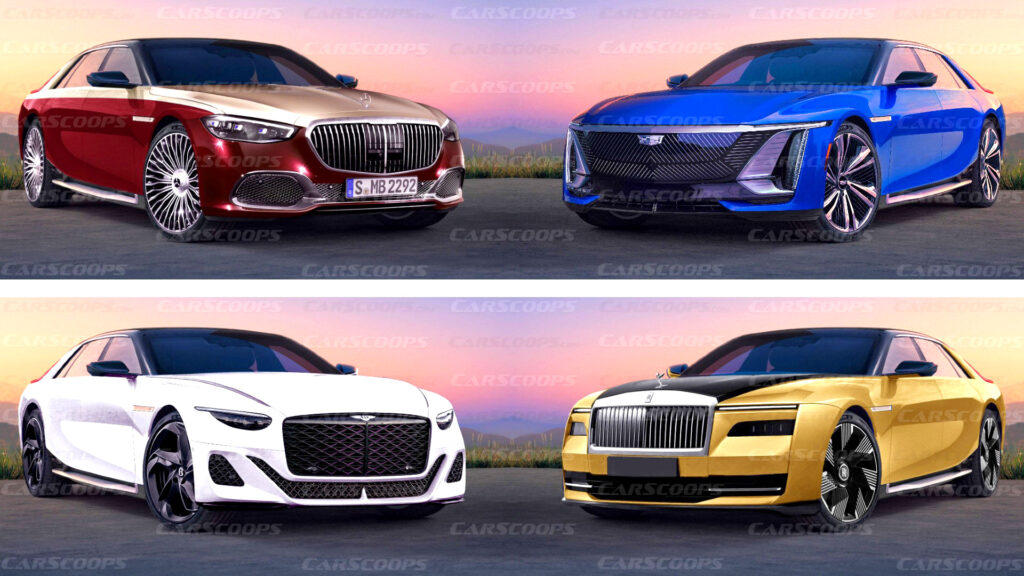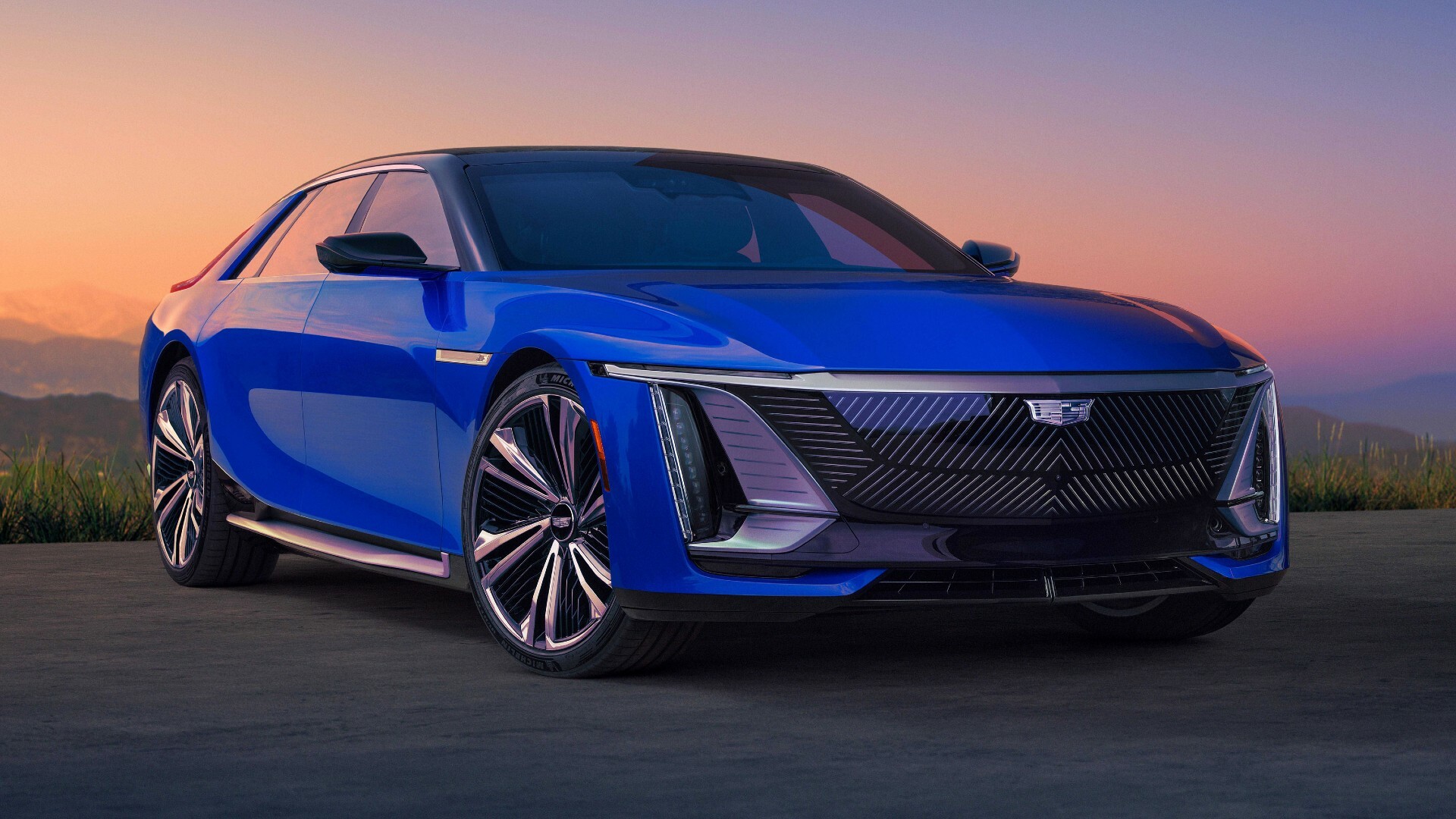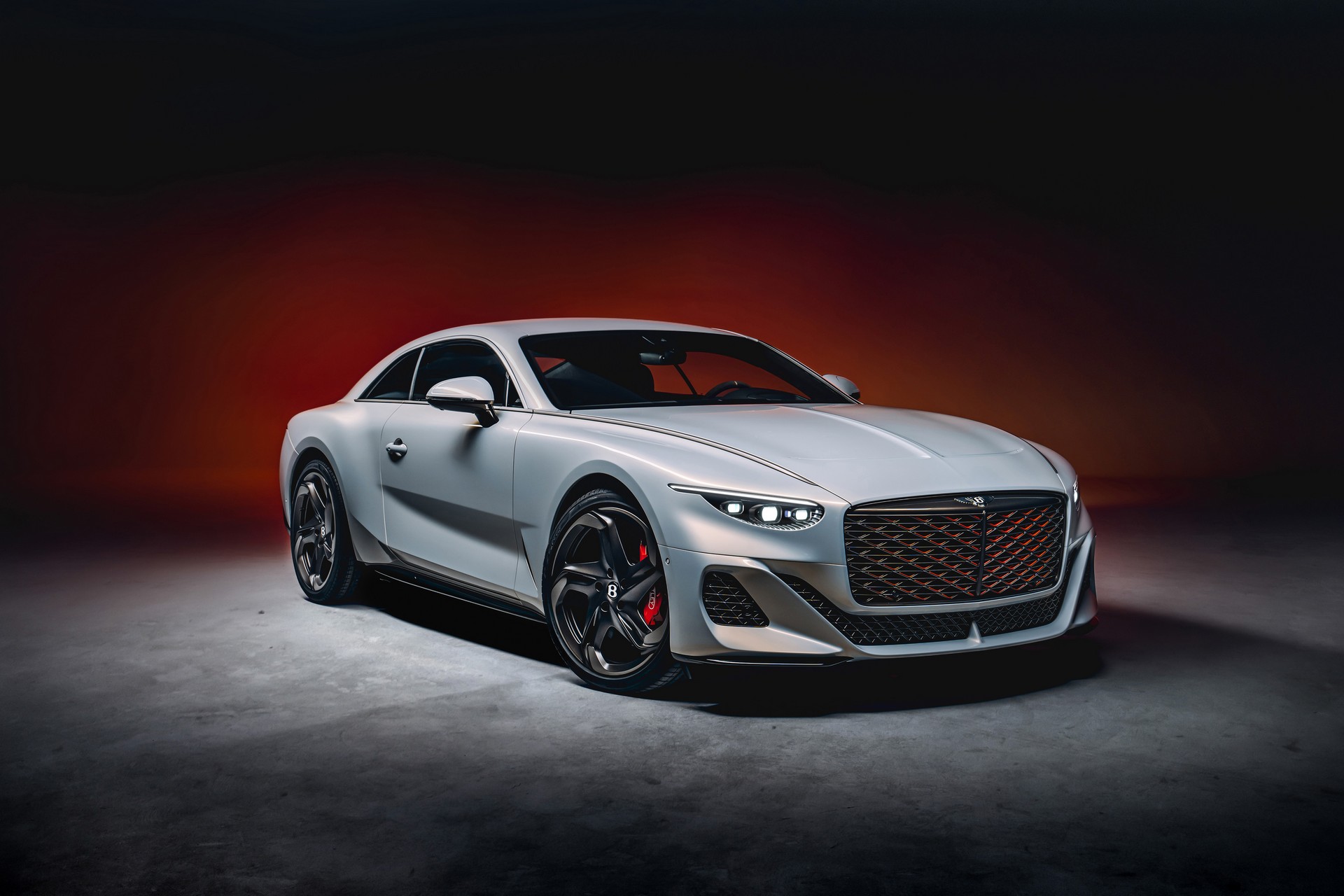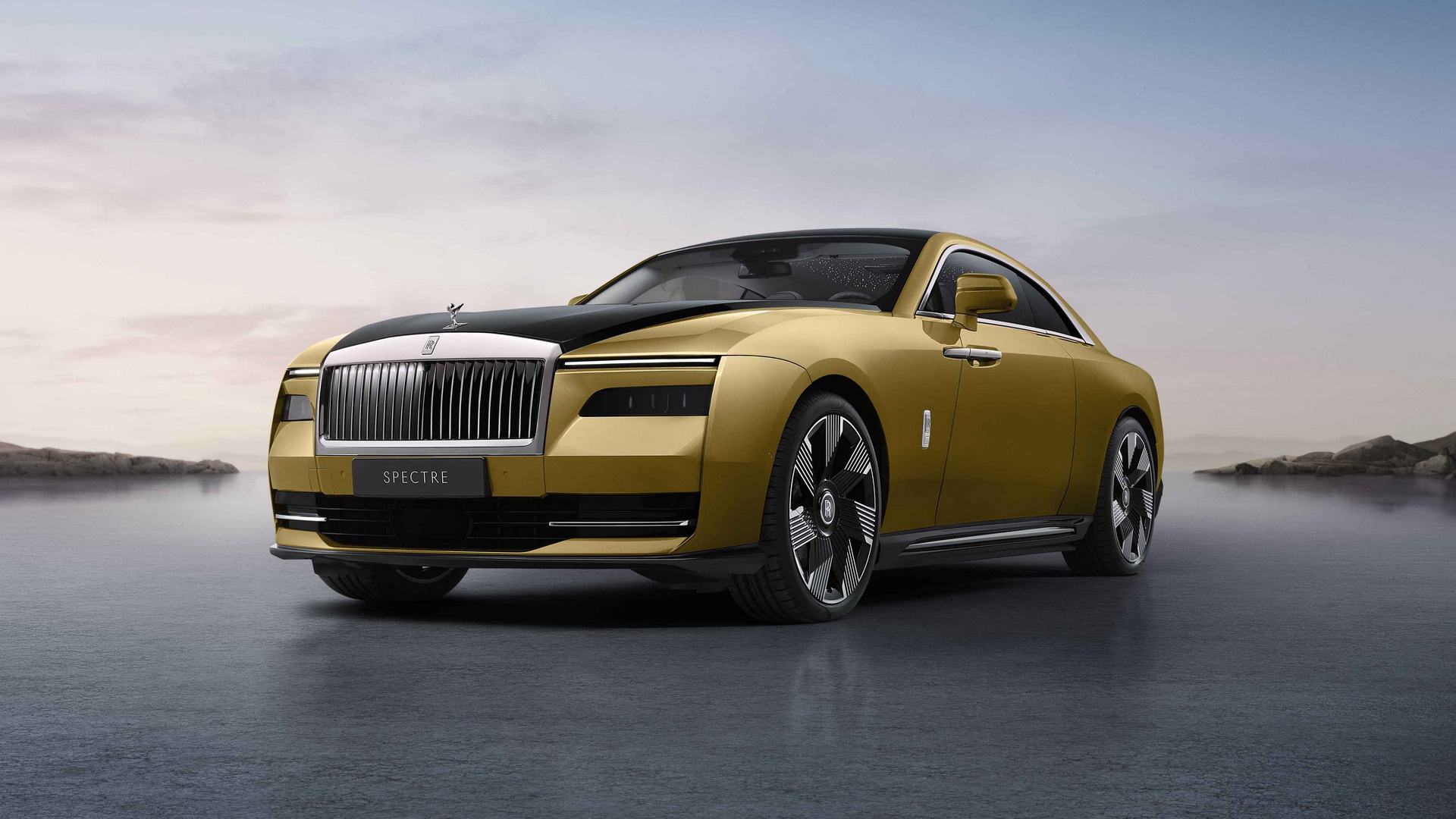The renderings included here are neither related to nor endorsed by Cadillac, Rolls-Royce, Bentley or Maybach.
With its brand-new Celestiq EV flagship, Cadillac is elevating to the ultra-luxury segment, eyeing brands like Rolls-Royce, Bentley, and Maybach. This inspired us to use the most exclusive Cadillac model for our latest face-swap session, trying on three different front end designs from the aforementioned luxury carmakers.
The Cadillac Celestiq stepped into our digital surgery room, ending up with the faces of the Bentley Mulliner Batur, the Mercedes-Maybach S-Class, and the Rolls-Royce Spectre. The selection of donor vehicles includes ICE-powered models since Bentley and Maybach have yet to show their first EV offerings, but at least the Rolls-Royce we chose was fully electric, just like the Cadillac.
More: How Does The Cadillac Celestiq Compare With Its $300k Luxury And Electric Rivals?
Before we start we must address the fact that the Cadillac Celestiq has an unconventional bodystyle for its segment, in which all low-slung models are traditional four-door sedans and the rest are high-end SUVs. Still, the notchback EV didn’t look as bad as we would expect when it got face-swapped, trading its Cadillac traits for other design languages.
Bentley Mulliner Celestiqur
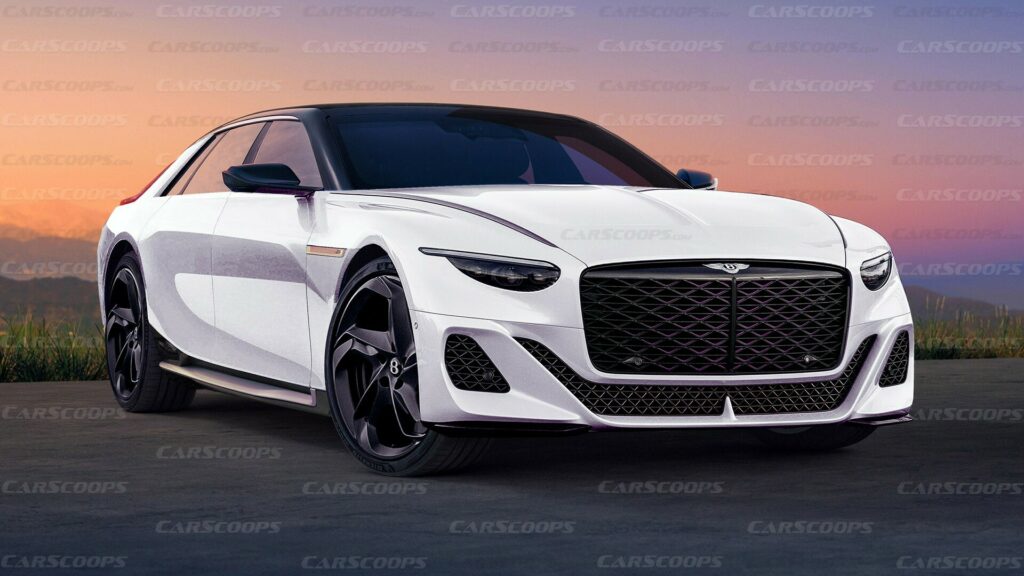
The Cadillac Celestiq will be a low-volume handbuilt model which brings to mind the Bentley Mulliner division. While its size and four doors would make it a more fitting competitor for the Flying Spur, we chose the Batur grand tourer as the donor vehicle for our rendering, as it is the latest example of Bentley’s evolved design language.
Interestingly, the large grille, complex bumper intakes, and roundish headlights of the Batur don’t look out of place when married with Celestiq’s fastback body. Bentley Mulliner also donated its own alloy wheels that always help the brain feel more at home with the design of each automaker. Another thing that makes it more realistic than originally expected is the duo-tone treatment with the black-painted roof.
Mercedes-Maybach Celest-Class
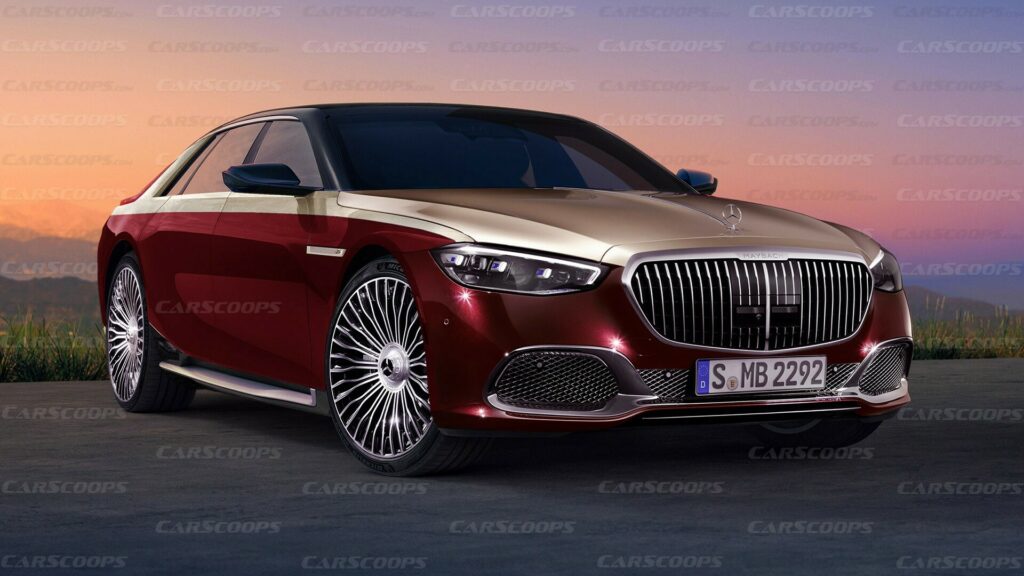
The next luxury contestant is the Mercedes-Maybach S-Class. Again we are talking about an ICE-powered model which explains the massive grille and the large openings on the front bumper. The heavy dose of chrome in the Maybach doesn’t look totally irrelevant to the Cadillac, thanks to the metal-style accent on the side sills.
The massive shiny, multi-spoke Maybach-specific alloy wheels and the dual-tone exterior combining gold and burgundy add bling to our imaginary vehicle. We should probably add more gold to the roof and mirrors instead of retaining the original black. A common feature between the S-Class and the Celestiq is the rear-wheel-steer system, so there is a loose connection.
Rolls-Royce Celectre
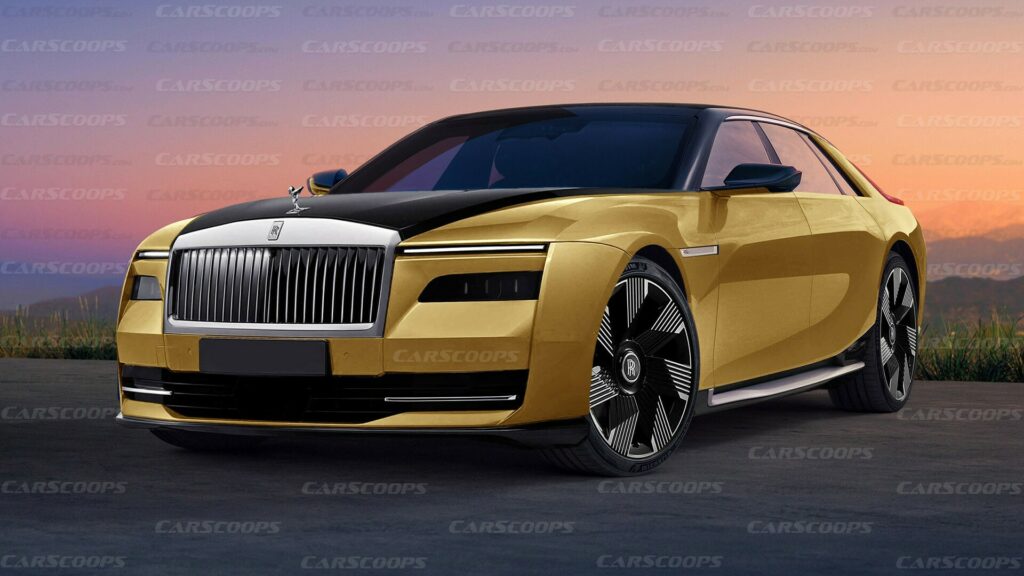
The Celectre is the result of an unconventional marriage between the Cadillac Celestiq’s body and the Rolls-Royce Spectre’s face. The latter is boxier and more imposing compared to Cadillac’s take in the segment. This makes it look weird in combination with the more fluid silhouette and estate-like proportions of the body. Still, the abstract wheels from the parts bin of the Goodwood automaker are a good fit, as with the gold and black color scheme.
The dream of every luxury vehicle is to be in the same sentence as the name Rolls-Royce. The Celestiq’s $300k targeted price is nowhere close to the starting price of a Rolls-Royce Phantom, but surely is very similar to the Rolls-Royce Ghost. Furthermore, Cadillac is boasting about the Celestiq having the “ultimate in ride refinement” which sounds like an effort to replicate the “magic carpet ride” of Rolls-Royce using adaptive air suspension, magnetic ride control, and active roll control systems. Will the bespoke version of GM’s Ultium platform be good enough to compete with Rolls-Royce’s Architecture of Luxury? Only time will tell.
And this is the end of our face-swapping session. Which of the three luxury faces better suits the Cadillac Celestiq in your eyes? Do you believe that the American flagship has what it takes in terms of design in order to compete with such strong rivals? Let us know in the comments section below.




